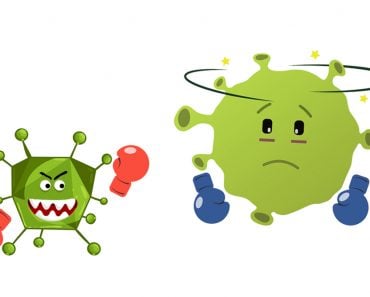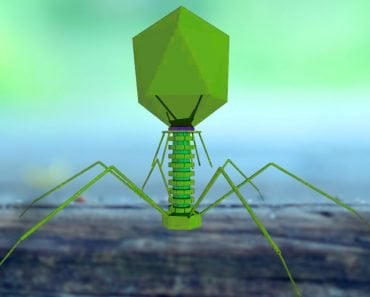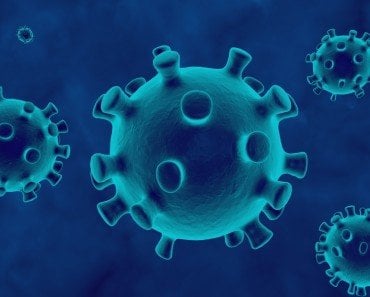Viruses are small infectious agents that cannot replicate on their own. They infect almost all living organisms, including animals, plants and microorganisms. Viroids are only an RNA molecule that primarily infects plant cells. They differ from viruses in structure and how they replicate.
In the early 1880s, Louis Pasteur proposed that a pathogen too small to be seen through a microscope was the cause of rabies. Later, in 1892, Dmitri Iosifocivh Ivanovsky described a pathogen infecting tobacco plants that were unlike any bacteria found in nature. In 1898, Martinus Beijerinck named this non-bacterial substance “Virus” and gave birth to the exciting and dynamic field of virology.
Since the identification of the first virus, over 9,000 viral species have been identified and studied.
Viruses represent the second major extension of infectious agents after bacteria. Even though bacterial infections are common, viruses are more abundant, as they outnumber bacteria by a factor of 10 to 1. Viral infections like the common cold and influenza are the ones that get discussed the most. Viral infections may be transmitted by contact, droplets, or they may be airborne. Many animal infections have a causative viral agent.
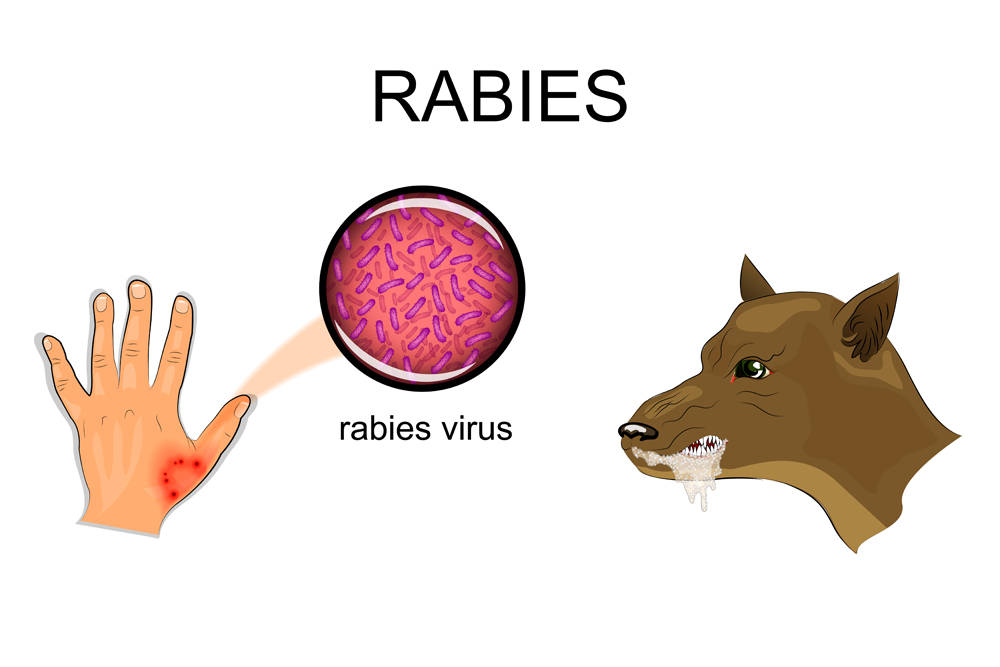
Viroids were first discovered in the 1970s by Theodor Otto Diener. He identified a pathogenic agent that was non-viral in nature, as it was much smaller than a virus and made of only short, single-stranded RNA, lacking a protein capsid that normal viruses have. He named them viroids, and this discovery triggered the third major extension of infectious agents after bacteria and viruses.
The viroid responsible for potato spindle tuber disease was named PSTVd and its complete sequence was determined in 1978. Since then, 30-40 viroids that cause infections in plants have been identified.
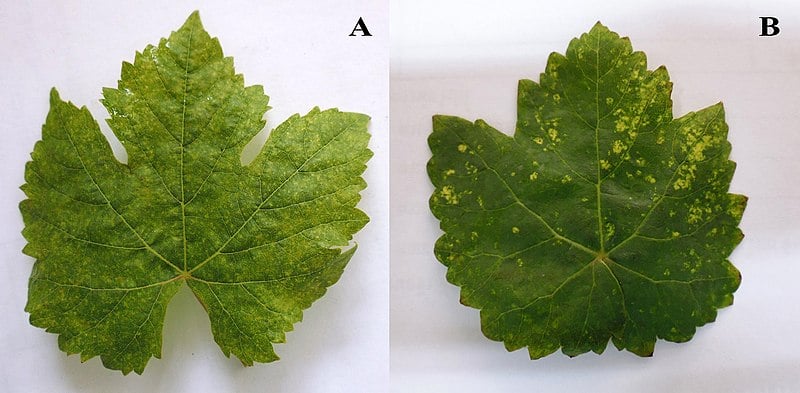
Recommended Video for you:
What Are Viruses And Viroids?
Viruses and viroids are small infectious agents that can exclusively replicate in living host cells. They are different, though they do share certain features.
Viruses are composed of a protein capsule (and sometimes an outer lipid envelope) that encases their genetic material. The viral genomes comprise DNA or RNA, which may be single-stranded or double-stranded. Viruses can infect bacteria, Archaea, plants and animals, and cause diseases, such as rabies, smallpox, HIV and AIDS in humans, as well as tobacco ringspot in tobacco plants.
Viroids, on the other hand, have an exclusively single-stranded RNA genome and have been shown to only cause infection in plants. Viroids cause potato spindle tuber and citrus exocortis infections in those respective plants.
As viroids are smaller than viruses, they are also known as “sub-viral agents” and have replaced viruses as the smallest known infectious agent.
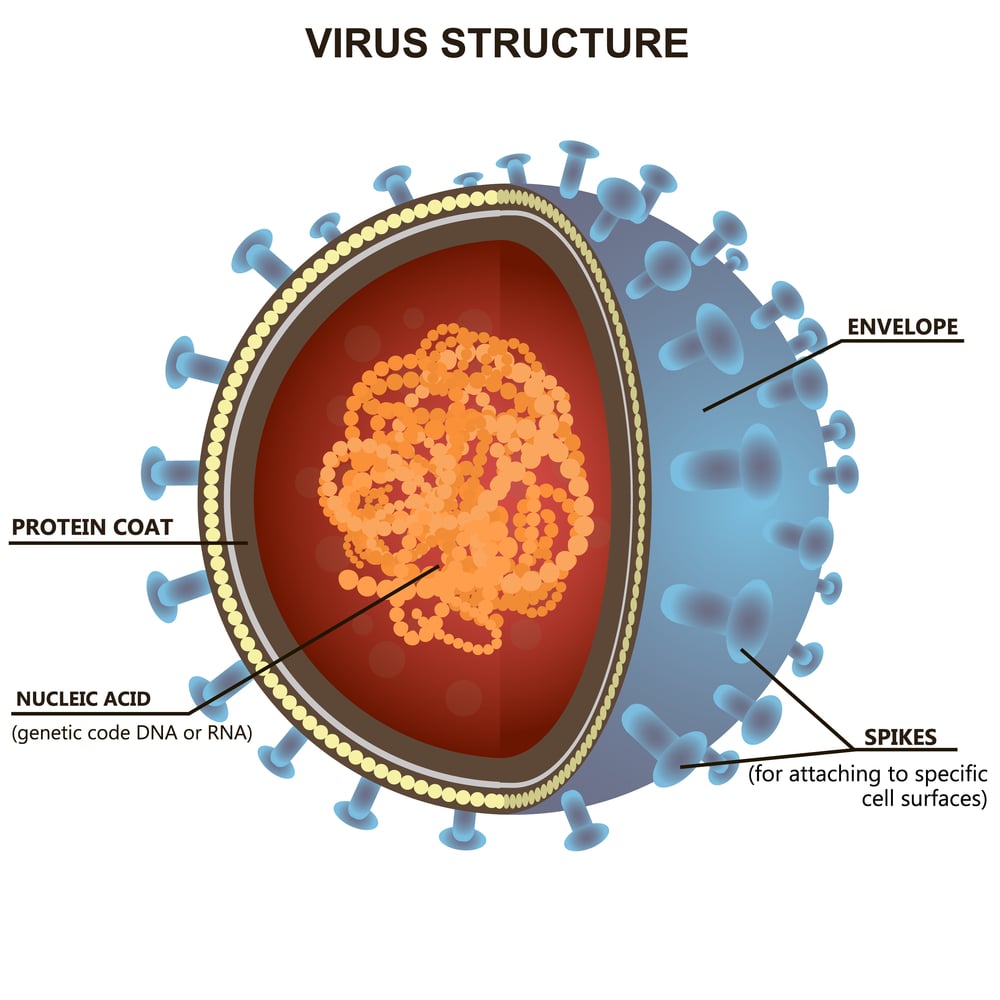

Structure Of Viruses And Viroids
Viruses exhibit many different shapes and sizes. They may be spherical, helical, polyhedral or complex in shape with their size ranging from 20-300nm.
Aside from plants and animals, viruses can also infect bacteria. The most common type of virus that infects bacteria are called bacteriophages. The structure of a bacteriophage has an outer protein capsid composed of small protein subunits called protomers, and encases the viral genetic material (DNA or RNA). It also has a tail tube connected to the capsid by a collar, a base plate, tail fibers and spikes. A virus particle with genetic material and the capsid is called a virion.
For most viruses, the capsid forms the outermost layer, but for some viruses, the viral capsid is enclosed within a lipid envelope. Such viruses are “enveloped viruses”. The influenza virus, hepatitis virus and the highly transmissible coronavirus are all enveloped viruses. Rotaviruses and polioviruses lack a lipid envelope and are called non-enveloped viruses.
Viroids are unusually small plant pathogens with no lipid envelope or protein capsid. They are single-stranded RNA molecules of about 360 residues.
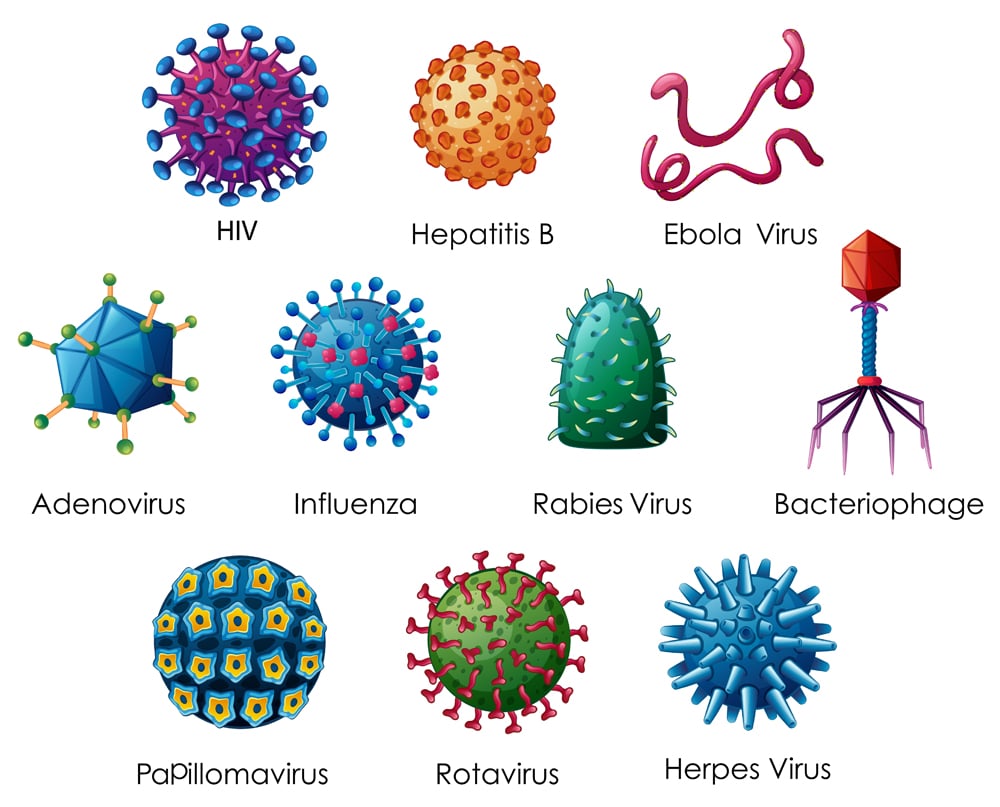
Co-evolution Hypothesis And RNA World Hypothesis
Since its discovery, researchers have asked themselves how viruses and viroids evolved.
Three different hypotheses can explain the origin of viruses. These are the progressive hypothesis, regressive hypothesis and co-evolution hypothesis or virus-first hypothesis.
The “Progressive hypothesis” states that the origin of viruses is based on the ability of mobile genetic elements (such as parts of DNA or RNA) to move from one cell to another. Such a genetic element can replicate with the use of host cell machinery to form new genetic elements that can enter a new cell and start replicating again.
The “Regressive hypothesis” states that viruses may have originated from a more complex ancestor that lost its genetic information over time. This lost genetic information stimulated the adoption of a parasitic approach to replicate, leading to the origin of the virus.
The “virus-first hypothesis”, also known as the “Co-evolution hypothesis”, proposes that viruses and cells evolved at the same time, as they both have proteins and nucleic acid in their composition.
The origin of viroids can be explained using the “RNA world hypothesis“. This implies that the existence of viroids with an RNA genome and their inability to make protein highlights the existence of a ribosome-free RNA world. It may also mean that RNA preceded DNA and proteins during the course of evolution.
Transmission Of Viruses And Viroids
Viruses have an exceptional ability to spread from one host to another; the host may belong to any of the three domains—Archaea, Bacteria and Eukarya.
Viral transmission is the mechanism of transferring a virus from one host to another host (of the same species or different species). For a virus to be transmitted, it must first enter a host, survive and replicate. The new viruses then break free into the environment to infect other host cells.
This viral transmission may be horizontal or vertical. Vertical transmission is the vertical transfer of viruses from mother to child, while horizontal transmission is the transmission from person to person. Viral outbreaks follow the horizontal mode of viral transmission.
The transmission of a viroid occurs through direct leaf to leaf contact with infected plants. They can also be transmitted through vegetative propagation or with the use of contaminated tools and instruments while following agriculture or horticulture practices. Some viroids are transmitted through pollen and seeds, while one known viroid is even transmitted by aphids.
Not all viruses and viroids can cause symptoms upon interaction with the host cell. These latent or symptomless viruses and viroids represent 7% and 4% of the classified viruses and viroids, respectively.
After a period of latency, the affected host cells begin to show symptoms that are indicative of infection by viruses or viroids.
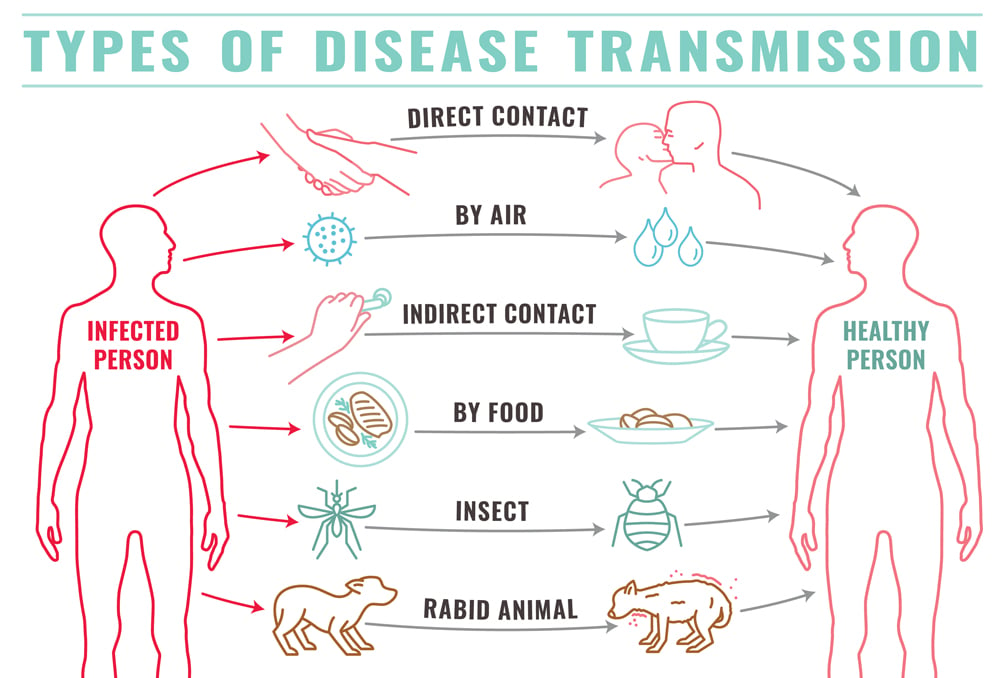
Genome Replication In Viruses And Viroids
Given that viruses and viroids are just particles and not cells, they need the molecular machines of their hosts in order to replicate. The mechanism of replication is analogous to the process of photocopying, where several copies of the same document can be created. All the materials and machinery are supplied by the host cell, while the viruses/viroids supply only the blueprint (the genetic material). The replication process creates exact copies of the virus and viroids in various numbers.
The site of replication for the viral and viroid genome differs based on the genetic material present. Viruses may have an RNA or a DNA genome, while viroids have only an RNA genome. The genomes of the DNA viruses replicate in the nucleus, while the genomes of the RNA viruses replicate in the cytoplasm of the host cell. Viroids (exclusively RNA) may replicate in the plant cell nucleus (nuclear-replicating viroids) or the chloroplast (chloroplast-replicating viroids).
When it comes to the mechanism of replication that is followed, DNA viruses use the host machinery for replication, while RNA viruses have their own replicase enzyme. This is an enzyme capable of synthesizing an RNA strand that is complementary to a template RNA. Therefore, the enzyme is also termed RNA-dependent RNA polymerase.
Reverse-transcribing viruses replicate their genomes with the use of a viral reverse transcriptase. Transcription is the process of synthesizing RNA from a DNA template. The process of reverse transcription is the synthesis of DNA from an RNA template. The enzymes capable of catalyzing this conversion are reverse transcriptase or RNA-directed DNA polymerase.
Once the viroid is transmitted to the plant, it will enter the plant cell via plasmodesmata and will use the host RNA polymerase II to replicate.
The most common mode of replication in viruses and viroids is “rolling circle replication”, though there are striking differences between certain strategies. The detailed mechanism can be better understood from research papers regarding DNA viruses, RNA viruses and viroids.
Viral genes code for proteins at the expense of host machinery, whereas viroids do not form proteins.
You may wonder, if viroids do not form proteins, how can they affect the plants? The answer is RNA silencing. The siRNAs of the viroids share sequence similarity with the plant RNAs, which enables it to degrade the plant RNA or to inhibit its translation, resulting in disease symptoms.

Conclusion
Viruses are indeed different from viroids in various aspects. From their size and shape to their mode of transmission and infection, there are characteristic differences between the two. Viruses affect both animals and plants, while viroids are strictly plant-related. The inability of viroids to encode proteins and affect the host through an RNA silencing mechanism is crucial, implying that they came into existence even before the proteins and DNA, and may play a key role in evolution.
References (click to expand)
- Viroid - an overview | ScienceDirect Topics.
- Virus.
- Viruses and Viroids - an overview.
- 9: Viruses.
- Moelling, K., & Broecker, F. (2021, March 28). Viroids and the Origin of Life. International Journal of Molecular Sciences. MDPI AG.
- Viroids - talk.ictvonline.org
- Flores, R., Gas, M.-E., Molina-Serrano, D., Nohales, M.-Á., Carbonell, A., Gago, S., … Daròs, J.-A. (2009, September 14). Viroid Replication: Rolling-Circles, Enzymes and Ribozymes. Viruses. MDPI AG.

